#peter jeffrey
Explore tagged Tumblr posts
Photo


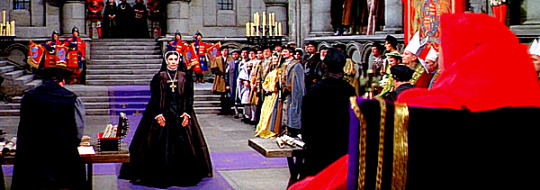

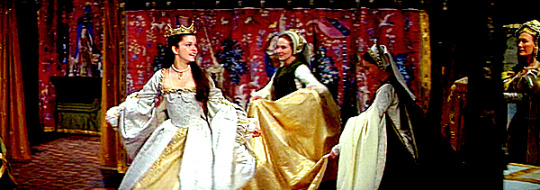
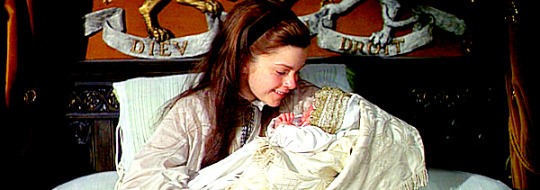

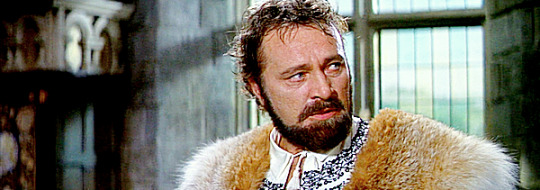
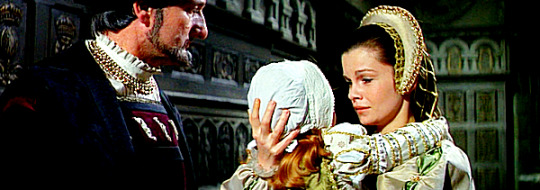
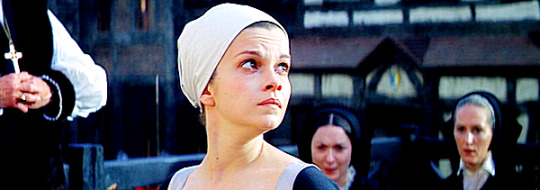
@perioddramasource: PERIOD DRAMA APPRECIATION WEEK
Day Five: Favourite Period Drama Film - Anne of a Thousand Days (1969)
#anne of a thousand days#perioddramaedit#perioddramaweek2023#richard taylor#genevieve bujold#michael johnson#irene papas#lesley paterson#peter jeffrey#henry viii#anne boleyn#George Boleyn#Katherine of Aragon#elizabeth i#Edward Seymour#jane seymour#thomas howard#my edits
212 notes
·
View notes
Text








if... (1968) Lindsay Anderson
January 3rd 2024
#if...#1968#lindsay anderson#malcolm mcdowell#david wood#richard warwick#christine noonan#rupert webster#robert swann#hugh thomas#peter jeffrey#arthur lowe#mona washbourne#mary macleod#geoffrey chater#sean bury#crusaders
12 notes
·
View notes
Photo

if....
directed by Lindsay Anderson, 1968
25 notes
·
View notes
Text
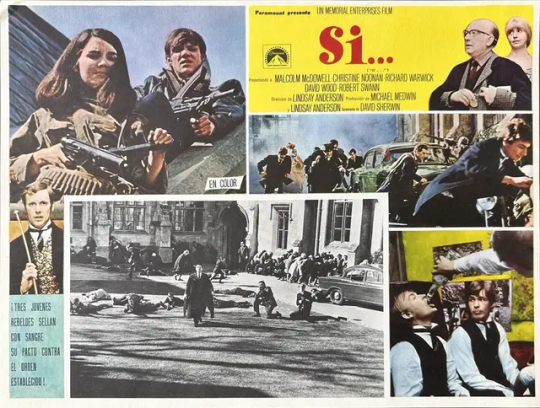
If…., Mexican lobby card. Ca. 1970
5 notes
·
View notes
Text

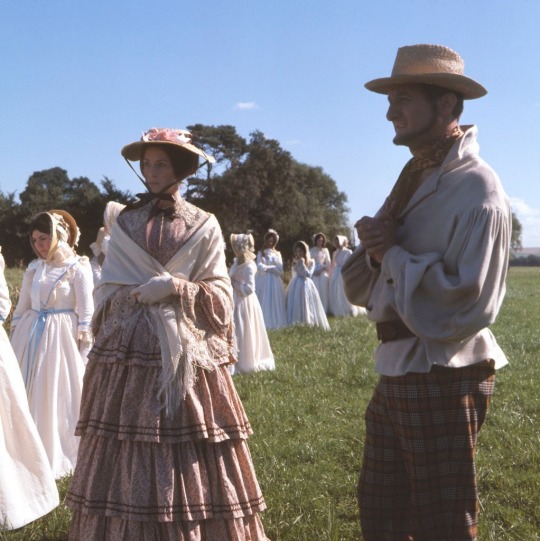
Some photo stills of "Villette" 1970 TV version featuring a scene where Lucy, Monsieur Paul and the students are having a picnic. Judy Parfitt plays as Lucy (top picture) and Paul Jeffrey as M. Paul (bottom picture; left).
"Villette" 1970 version is one of known TV adaptations based on a same title of a novel written by Charlotte Brontë and it was produced by the British Broadcasting Corporation. It is said that all of its five episodes are currently lost and the only proof of existence are some of its photo stills available in BBC Archive.
#villette#charlotte bronte#charlotte brontë#villette 1970#lucy snowe#m. paul#m paul#monsieur paul#judy parfitt#peter jeffrey#period drama#british period drama#lost episode#lost programme#lost show#classic literature#monsieur paul emanuel#m. paul emanuel
3 notes
·
View notes
Text

Vincent Price as Dr. Phibes”
1. One of Vincent Price’s greatest roles was in “The Abominable Dr. Phibes” (1971). In it he played a brilliant artist and scientist who was horribly disfigured and thought dead as he raced back to London to see his wife. She was undergoing a life and death operation which, alas, she died. Phibes swore revenge on the 10 doctors and nurses who participated in the surgery.
2. Phibes murder spree was inspired by the Ten Plagues of Egypt from the Old Testament. Each was more gruesome than the last, but they were all done with panache. Phibes was assisted by Vulnavia (a beautiful but silent young woman) and he was accompanied by a stylish life-size clock work band.
3. After neatly eliminating all his targets, Phibes evaded capture by laying down in a hidden double sized coffin with his wife body.
4. Dr. Phibes (and Price) rose again in the 1972 sequel. After a few years of literally laying low, he returned so that he could bring his wife’s body to Egypt and resurrect her via ancient secrets he had discovered. Somehow Vulnavia returned to assist him again (even tho she died in the last movie).
5. But Phibes’ Egyptian cure-all is also sought by Darius Biederbeck (Robert Quarry) who is suffering with a kind of Dorian Grey type curse. Quarry is best known for his Count Yorga movies (Dracula knock-offs).
6. Sooner than you can say cruise-ship, the adversaries are headed off to Egypt, with Phibes leaving a trail of victims behind him.
7. The cast included three actors from the original. Peter Jeffrey returned as Inspecter Trout. After a few odd murder victim are found, Trout suspects Phibes has returned when he learned the cruise ship’s cargo included a life-size clock work band. Terry-Thomas returns in a new role (his character was exsanguinated in the first film). And Hugh Griffith who survived the first film but not so the second.
8. Although I enjoyed seeing Price as Phibes, the sequel didn’t reach the heights of the original. In the first, Phibes was driven by revenge, with a clearly set list of victims. That helped drive the plot. He also had clever ways of killing via the ten plagues of Egypt - so you could wonder or anticipate how he would accomplish the next.
9. But in the sequel, those key elements were gone, and while some of the murderer were inventive, they were just a series of people who got in his way.
10. A third Phibes movie was discussed but It didn’t help that Quarry and Price didn’t get along during production. It was reported that one day, Quarry was singing in his dressing room and he asked Price:
Quarry: "You didn't know I could sing did you?"
Price replied: “Well I knew you couldn't act."
#Vincent price#horror films#Abominable Dr. Phibes#Ten Plagues of Egypt#Peter Jeffrey#terry thomas#Robert Quarry#count yorga vampire
7 notes
·
View notes
Text
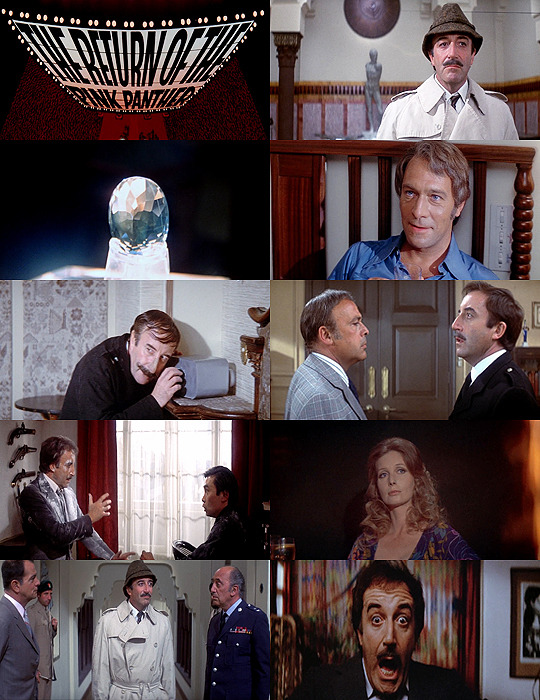

Films Watched in 2024: 7. The Return of the Pink Panther (1975) - Dir. Blake Edwards
#The Return of the Pink Panther#Blake Edwards#Peter Sellers#Christopher Plummer#Catherine Schell#Herbert Lom#Peter Arne#Burt Kwok#Peter Jeffrey#Grégorie Aslan#The Pink Panther#Inspector Closeau#Films Watched in 2024#My Edits#My Post
11 notes
·
View notes
Text

The Abominable Dr. Phibes (1971)
In the late 1950s and 1960s, American International Pictures (AIP) was a minor Hollywood studio with an outsized reputation. AIP, which made nothing but low-budget pictures and B-movies during its existence, focused on cornering the market for teenagers and young adults. Rather than making an endless string of superhero movies, AIP instead relied on its Beach Party series and related films (1963-1967) and inexpensive horror movies (usually involving producer/director Roger Corman). One of AIP’s mainstays for its coterie of horror films was none other than Vincent Price. A longtime character actor for 20th Century Fox, Price had only begun to regularly feature in horror films beginning with House of Wax (1953). From there, he became a regular on AIP’s Edgar Allan Poe adaptations (very loose adaptations, mind you) under Corman’s direction. No matter how dastardly Price’s characters schemes were in his numerous horror films, Price’s almost effortless charm always pored through, to the point that one cannot help but root for his schemes to succeed.
Though Roger Corman was not involved in The Abominable Dr. Phibes (Phibes rhymes with “bribes”), a portion of Price’s fans point to his performance here in the title role as the Vincent Price-iest of all. In this darkly comedic horror film directed by former production designer Robert Fuest (the 1961-1969 TV series The Avengers, director on 1970’s Wuthering Heights), the film’s deliberate campiness demands more absurd motivations, plot developments, and aesthetic choices than some viewers might be comfortable with. In short, this is not the ideal introduction to Vincent Price or AIP’s horror movies. To enjoy the first Phibes film is to be in on the joke, to accept the film’s inherent silliness.
The opening credits help set that mood. As they roll, Dr. Phibes (Price) ascends from beneath a flight of stairs, playing on organ Felix Mendelssohn’s “War March of the Priests” from Athalie. His only company in this fiendish lair are his tall, silent assistant Vulnavia (Virginia North) and his animatronic band, the Dr. Phibes Clockwork Wizards. Reported killed in a Switzerland car accident in 1921 alongside his wife Victoria, Phibes (who carries heavy facial scars and lost his speaking voice in the crash) is hellbent on seeking revenge against the British doctors who presided over Victoria’s failed surgery. Instead of going to therapy, Phibes murders the doctors instead. One after another, the doctors die in increasingly elaborate ways – each homicide inspired by one of the ten Plagues of Egypt as described in the Book of Exodus. After the third doctor dies, Scotland Yard finally begins connecting the dots under Inspector Harry Trout (Peter Jeffrey). Trout soon realizes that the deceased were all directed by Dr. Vesalius (Joseph Cotten). This revelation only begins to unearth Phibes’ wicked plot.
Elsewhere, Hugh Griffith plays a helpful Rabbi and Terry-Thomas plays one of the doctors. Derek Godfrey and John Cater play Inspector Trout’s superiors, Crow and Weaverly, respectively. Aubrey Woods, whom most know as Bill the Candy Man from Willy Wonka and the Chocolate Factory (1971), plays an eyewitness named Goldsmith.
youtube
The screenplay by William Goldstein (who returned for the sequel), James Whiton (his only major writing credit), and Fuest, is no one’s idea of sensible, intelligently structured writing. The transitions between the scenes involving Phibes, his assistant, and the victims to Scotland Yard and Dr. Vesalius are untidy. Goldstein, Whiton, and Fuest attempt to make more of a mystery out of this film than they should, but it only serves to make the investigatory half of the film as a dumping ground of expository dialogue. The scenes with Phibes are the zanier, far more interesting parts of the screenplay – even though the character can no longer speaker (the writers engineer an inexplicable workaround, but this unlikely development can have a pass in the context of this bizarre work). For the scriptural scholars among us, some of the stylish killings of the unsuspecting doctors take liberties with the stated Ten Plagues of Egypt. Though perhaps unacceptable to those demanding strict adherence to the holy texts, the thematic divergences of those murders are still so cockamamie that most viewers probably do not mind.
Dr. Phibes’ murders would make Jigsaw from the Saw series (2004-present) proud. To be clear, The Abominable Dr. Phibes is not a slasher film (a subgenre that was beginning to find its foundations by the early 1970s), but it contains elements that would become slasher hallmarks – an individual committing several revenge killings due to a past event, a sort of catharsis (in later slasher movies, sexual gratification) in the act of killing, and unusual manners of murder. Instead of horrifying the viewer with the wanton death, it is Vincent Price’s performance that keeps The Abominable Dr. Phibes within the confines of comedic horror. Due to reasons that I do not wish to spoil, Price’s Phibes scarcely makes a facial expression aside from his default, neutral gaze. His gait is deliberate and steady. Without the possibility of any facial muscular contortions or Price’s trademark smirk, so much of Price’s performance is through his eyes. From his thousand-yard stares, contemptuous gazes, world weary looks, and bemused glances, Price provides an enormous amount of the film’s soul and tenor with so little of his body. This sounds like a silent film director’s dream, but Price’s performance is a commanding one, in any era. His Dr. Phibes may not be in full control of his movements (thanks to Trevor Crole-Rees’ excellent makeup design), but Price is always fully in control of his acting. No surprise to anyone who knows Price’s work – always dependable to provide his utmost effort, no matter how dire the material.
The screenplay, nevertheless, keeps some emotional distance between the audiences and the title character. Though the film’s absurdity allows the viewer to scrap their sense of morality while watching Phibes slaughter each of the doctors, Phibes’ psychology is inaccessible until the film’s second half. The filmmakers, by not prioritizing Phibes’ mindset as much as they could, continually frame him as the villain amid bumbling detectives, the privileged victims (ensuring that the viewer cares not too much about their deaths), and the prideful Dr. Vesalius (whose hubris erodes as the film progresses, revealing his desperate humanity).
If anybody could be considered a co-lead here, that would be Joseph Cotten as Dr. Vesalius. The underrated and undermentioned Cotten, not at all known for his horror work and more for his collaborations with Orson Welles (namely 1941’s Citizen Kane and 1942’s The Magnificent Ambersons), performs ably here. Cotten replaced Price’s friend, Peter Cushing (Grand Moff Tarkin in 1977’s Star Wars, a regular as Baron Frankenstein and Van Helsing in Hammer horror movies), after Cushing fell ill. Cushing would have been ideal in the role, but never does Cotten act as if the unconvincing dialogue is beneath him, even if he doesn’t attempt to hide his American accent. As Dr. Vesalius, Cotten wonderfully inhabits his character’s desperation as his colleagues meet their ends, as if prophesied.
Set designer Brian Eatwell (1973’s The Three Musketeers, 1976’s The Man Who Fell to Earth) runs rampant with his design to Phibes’ lair. A curious combination of art deco and the garishness of 1970s colors serves the film’s ludicrousness. I am not sure how livable Phibes’ abode is – there are nary any bedrooms or any other amenities depicted – but the central chamber could be an ideal place for a raucous, demented soiree. Vulnavia’s ever-changing wardrobe in each of her scenes is also a delight, thanks to costume designer Elsa Fennell (1964’s Goldfinger, 1971’s Diamonds Are Forever). Perhaps there isn’t too much of association between campy costumes and sets with heartrending motives for murder, but that is exactly what transpires in The Abominable Dr. Phibes.
In addition, a laughably anachronistic soundtrack of swing jazz and Great American Songbook standards dot the film. I was not prepared for the appearance of either Mendelssohn’s “War March of the Priests” nor the legendary song that rounds out the closing credits. Phibes’ introduction while playing the former on organ readies the viewer not to take everything that is about to unfold seriously. For the latter song (again, I dare not spoil this), a brilliant solo trumpet takes the easily recognizable melody and swings it. Lyrically, this song’s placement in the end credits is fitting for what happens to Phibes. But I could not help but laugh the moment I heard the opening notes – a fitting send-off to a gleefully daft movie.
When The Abominable Dr. Phibes arrived in theaters, its poster showed the mutilated Dr. Phibes appearing as if he is about to kiss a woman. Above them read the tagline: “Love means never having to say you’re ugly.” This was a reference to Love Story (1970), with its (in)famous tagline and in-movie quote: “Love means never having to say you’re sorry.” The marketing for The Abominable Dr. Phibes confused audiences – was it a romance? horror? parody? – and the film struggled initially before AIP retooled its advertising to market the film as a horror film. On its low budget, the film was successful enough to warrant AIP to greenlight a sequel, Dr. Phibes Rises Again (1972). That sequel marked the beginning of the end of Price’s association with AIP, due to conflicts over his pay (while AIP’s box office fortunes were dwindling), his lack of satisfaction with the scripts coming his way (not even Price wanted to star in two Dr. Goldfoot movies in two years), and AIP’s plans to replace him with Robert Quarry as their primary horror star.
In the years since the film’s debut in cinemas, The Abominable Dr. Phibes has garnered a deserved cult status. There was no stopping Vincent Price from leaving AIP, but AIP – with their Robert Quarry plans not even a secret – somehow undervalued the actor who was their principal attraction through the 1960s. An essential in Price’s filmography, The Abominable Dr. Phibes defies genre conventions, genre categorization, and any semblance of rationality. For those looking for some bloody horror as the mercury drops, look no further than here. The first Dr. Phibes films guarantees murders with a wink and, though not a smile, an animatronic band playing hits that have yet to be composed.
My rating: 7/10
^ Based on my personal imdb rating. My interpretation of that ratings system can be found in the “Ratings system” page on my blog. Half-points are always rounded down.
For more of my reviews tagged “My Movie Odyssey”, check out the tag of the same name on my blog.
#The Abominable Dr. Phibes#Robert Fuest#Vincent Price#Joseph Cotten#Peter Jeffrey#Virginia North#Hugh Griffith#Terry Thomas#Derek Godfrey#John Cater#Aubrey Woods#William Goldstein#James Whiton#Sean Bury#John Laurie#Trevor Crole-Rees#Maurice Kaufmann#TCM#My Movie Odyssey
5 notes
·
View notes
Text

Bad movie I have Countess Dracula 1971
#Countess Dracula#Ingrid Pitt#Nigel Green#Sandor Elès#Maurice Denham#Patience Collier#Peter Jeffrey#Lesley-Anne Down#Leon Lissek#Jessie Evans#Andria Lawrence#Susan Brodrick#Ian Trigger#Nike Arrighi#Peter May#John Moore#Joan Haythorne#Marianne Stone#Charles Farrell#Sally Adcock#Anne Stallybrass#Paddy Ryan#Michael Cadman#Hülya Babus#Lesley Anderson#Biddy Hearne#Diana Sawday#Andrew Burleigh#Gary Rich#Albert Wilkinson
5 notes
·
View notes
Text
"THE MOONSTONE" (1996) Review

"THE MOONSTONE" (1996) Review
Following my viewing of the 1997 television movie, "THE WOMAN IN WHITE", I followed up with an adaptation of another Wilkie Collins' novel, "THE MOONSTONE". Like the other adaption, this adaptation had been produced back in the 1990s as a television movie.
Based on Collins' 1868 novel, "The Moonstone: A Romance", "THE MOONSTONE" was an early modern detective story that centered around the theft of a valuable gem. A young English socialite named Rachel Verinder inherits a large Indian diamond called "a moonstone" on her eighteenth birthday. The gem is a legacy from her uncle, a corrupt British army officer named Colonel Sir John Hardcastle, who had stolen it from a religious idol, while serving in India. The diamond is of great religious significance and extremely valuable, and three Hindu priests have dedicated their lives to recovering it. Although Sir John's theft of the Moonstone had involved murder, he was never punished for his crimes. But he ended up shunned by society and his sister, Lady Julia Verinder. In retaliation for the shunning, Sir John leaves it in his will as a birthday gift to his niece Rachel, exposing her to the attentions of the gem's legal guardians.
On the night of her birthday party, Rachel wears her new present. Lady Julia, Rachel's cousin Franklin Blake and the local Dr. Candy all seem very anxious over Rachel's possession of the Moonstone. Especially since a trio of Indian jugglers had appeared at the Verinder estate. Later that night, the gem disappears from Rachel's room. Stolen. Suspicion first falls upon the three Indian jugglers. But retired Scotland Yard investigator, Sergeant Cuff believes the theft was an inside job. His suspicions fall upon one of the Verinders' servants, Rosana Spearman; and Rachel, whom he believes harbored plans to use the diamond to pay off secret debts.
I really do not know how to start this review, if I must be honest. I believe a good deal of my feelings originated from how I feel about Collins' story. I have never read his novel. But I have seen at least three adaptations of it to get a pretty good grasp of it. I must admit that director Robert Bierman and screenwriter Kevin Elyot did a very good job in setting up Collins' tale in this adaptation. They did not rush through the narrative in order to arrive on the night of the theft. And Elyot's screenplay also did an excellent job in exploring the novel's main characters - especially Rachel Verinder, her mother Lady Julia, the Verinders' major domo Gabriel Betterege and Franklin Blake. The movie also did a first-rate job in conveying the details of Blake and Cuff's investigation of the theft, along with Rachel's strange behavior. But once their investigation hit a dead end and the story moved on to the third act . . . I started having problems with the movie.
I could blame Wilkie Collins and his novel. Or I could blame the movie's screenwriter for trying to adhere as closely to Collins' story as possible. But after Franklin resumed the investigation of the Moonstone's theft a year after the incident, "THE MOONSTONE" seemed to be piled with nothing but contrived writing. I can only assume that Collins had wanted to deliver a surprise twist to his readers when he revealed who had taken the gem. I was certainly surprised when I first saw this film. And after three or four years, I have remained . . . dissatisfied with the revelation. I mean . . . seriously? And the series of events that led to the theft also struck me as contrived. But that was nothing in compare to the events that led to the Moonstone's final fate. To this day, a part of me wishes that the filmmakers had changed some of Collins' narrative for this movie.
At least I had no problem with the film's production values. Sarah Greenwood's production designs struck me as first-rate in her re-creation of Great Britain during the late 1840s. I was especially impressed by her creation of London during that period. Philip Robinson's art direction, the film's Art Department and John Daly's cinematography ably contributed to her work. I especially enjoyed Daly's photography of the marshes in Norfolk that served as the setting for one very memorable scene. I also admired James Keast's costume designs. His costumes struck me as a near accurate reflection of the film's late 1840s setting. I must admit that I found those costumes for the upper-class female characters a bit on the dull side. Was this dullness a direct reflection of elite women's fashion of that period? Perhaps someone can answer that for me.
Both Greg Wise and Keeley Hawes gave solid performances as the movie's romantic leads - Franklin Blake and Rachel Verinder. I cannot deny that the pair possessed some semblance of screen chemistry, especially during the film's first half hour. But they never really had the opportunity to develop that chemistry, since their characters spent most of the film at odds with one another or apart. The movie also featured solid performances from the likes of Scott Handy, Patricia Hodge, Anton Lesser, Peter Jeffrey, Paul Brooke, a menacing performance from Terence Hardiman as the slightly sinister Col. Sir John Hardcastle, and a rather entertaining performance from Kacey Ainsworth as the Verinders' holy roller cousin Drusilla Clark. Which leads me to my favorite performances in the movie.
One of those performances came from Peter Vaughan, who portrayed the Verinder family's steadfast majordomo, Gabriel Betterege. Not only did Vaughan did an excellent job in conveying Betterege's intelligence, but also the character's sharp humor. I really enjoyed his performance. Another performance that impressed me was Antony Sher, who portrayed the botanical loving former Scotland Yard detective, Sergeant Richard Cuff. I believe real life Victorian police detective Jack Whicher had inspired Collins' creation of Cuff. But Sher injected a touch of humorous eccentricity to the character that made his performance so enjoyable to me. One last performance had impressed me and it came from Lesley Sharp, who portrayed one of the Verinders' maids, Rosanna SpearmanR. Sharp gave an etheral, yet intense performance as the lovesick Rosanna, which left a haunting cloud over the story before the last reel.
Would I regard this 1996 television movie as the best adaptation of Wilkie Collins' novel? Hmmm . . . perhaps not. I have seen other adaptations that had delved into the narrative with a bit more detail. And the ending of this film seemed to rush a bit toward the end. However, I did managed to enjoy "THE MOONSTONE" very much. And thanks to Robert Bierman's direction, Kevin Elyot's screenplay and excellent performances from a cast led by Greg Wise and Keeley Hawes, I would have no problems doing a rewatch of this film over and over again.

#wilkie collins#the moonstone#the moonstone 1996#victorian age#greg wise#keeley hawes#peter vaughan#antony sher#anton lesser#kacey ainsworth#lesley sharp#patricia hodge#paul brooke#peter jeffrey#scott handy#terence hardman#period drama#period dramas#costume drama
1 note
·
View note
Text




Sir Peter, Allen King, Jeffrey Lloyd & Adam Franco (2022)
#sir peter#allen king#jeffrey lloyd#adam franco#guys#men#menedit#gayedit#gay#boys#holesrus#🍑#gifs#mine#*
2K notes
·
View notes
Text








Countess Dracula (1971) Peter Sasdy
September 30th 2024
#countess dracula#1971#peter sasdy#ingrid pitt#nigel green#Sandor Elès#maurice denham#patience collier#lesley-anne down#peter jeffrey#leon lissek
14 notes
·
View notes
Text
I'm really getting tired of pointing out what dip-shits these people are.
Remember when Trump said he would only hire the best people? Well, Pete Hegseth, the raging alcoholic Fox News personality he installed as the goddamn Secretary of Defense accidentally texted U.S. military strike plans in Yemen to Jeffrey Goldberg, the fucking editor-in-chief of The Atlantic.
These were "highly sensitive and classified details about the Pentagon's plan to carry out military air strikes against the Houthis, who have been launching attacks on Western commercial vessels in the Red Sea for more than a year." If that publication had decided to cite details from the texts, our service members could have been targeted and killed.
Oh, and before you MAGA boot-lickers come at me about this being "fAkE nEwS" or whatever you call facts that don't fit your weak-ass narrative: The White House admitted the mistake.
#trump administration#peter hegseth#national security#the atlantic#jeffrey goldberg#national security leak#maga cult#yemen#houthis
628 notes
·
View notes
Text
⠀⠀ ⠀⠀ ★ . . . my boyfriend’s pretty cool


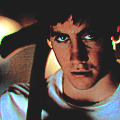

























#icons#icons 120x120#edits#leonardo dicaprio#johnny depp#matt damon#ethan hawke#chad michael murray#adrien brody#matthew mcconaughey#cillian murphy#river phoenix#christian bale#jamie dornan#tom hardy#andrew lincoln#jeffrey dean morgan#matthew lillard#evan peters#chris evans#jared leto#joseph gordon levitt#heath ledger#brad pitt#jake gyllenhaal#ryan gosling#pedro pascal#aaron taylor johnson#james mcavoy#miedit
3K notes
·
View notes
Text

Rare paperback edition of "Villette" novel with the cover featuring Judy Parfitt as Lucy Snowe and Peter Jeffrey as M. Paul Emanuel from the 1970 BBC version of the same title.
Source: eBay
#villette#charlotte bronte#lucy snowe#m. paul emanuel#m paul emanuel#judy parfitt#peter jeffrey#villette 1970
27 notes
·
View notes
Text


Re-Animator (1985)
#Horror#Horroredit#Re-Animator#Stuart Gordon#Jeffrey Combs#Peter Kent#Herbert West#CHB#1985#80s#SFXBlood#SFXGore
2K notes
·
View notes